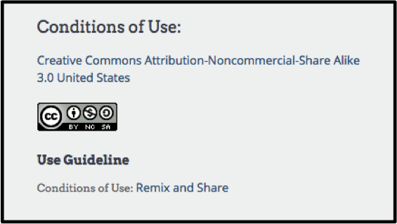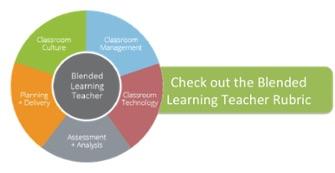Back in my day, all schools were brick-and-mortar. Back in my grandfather’s day, they were brick-and-mortar with everyone in one classroom, regardless of grade level. Back in my grandfather’s grandfather’s day… well, who knows? The point is: Education is evolving and changing as it responds to the needs of students and the opportunities around us. With virtual schools, classes, and learning opportunities gaining popularity, it’s important to stay up to date on how to help these virtual educational experiences continue to be engaging and effective.
There’s no room for a huge, dusty textbook with the wrong list of planets in a classroom set in cyberspace. Instead, we need high-quality, current resources to keep students interested, informed, and engaged. That’s where OER come into play. As these resources race to the front, they help teachers push through barriers due to textbook contracts: high prices, irrelevant content, and ineffective material to meet students’ needs. Enter: OER.
In fact, some school districts, such as The Enlarged School District of Middletown in New York, are completing ditching conventional textbooks and instead building their classroom instruction around OER. With their flipped classroom model, Middletown uses OER to deliver the direct instruction on their classroom topics and then uses classroom time to enhance student understanding. OER offer new possibilities for instruction, more relevant material, and more teacher freedom for building the curriculum. Middletown is leading the movement in creating a more effective and engaging classroom environment for students by exploring the options of OER.
What materials are OER?
Let’s set the record straight: OER are materials that have a Creative Commons license attached or reside within the public domain. They could be anything from videos, to Powerpoints and presentations, to images and infographics, and even interactive activities. With so many formats, it is no surprise that these resources cover countless topics across all subjects and grade levels; they address everything from academic skills, such as those aligned to Common Core, to career and technical skills.
The 2015 Department of Education’s #GoOpen campaign explains the benefit of using OER for their high-quality content, accessibility, and ability to be constantly modified so that the most up-to-date content is available for all learners. Not only does the movement to #GoOpen enable teachers to transform education across the globe, but it also helps to reduce the amount of funds spent on textbooks while providing more relevant and engaging materials to all students in a way that is more personalized than ever before.
Unfortunately, there’s still a lot of confusion about how and where to find these resources. If you do a Google search for a photosynthesis video that you want to show your science class, you’re bound to find a lot of different things, but not necessarily OER. And really, how do you know what’s what? Wouldn’t it be nice if there were a website that made this search process easier? Well, you’re in luck.
Online repository sites like OER Commons do a great job of allowing teachers (and students) to search for resources using specific search tags related to the topic, course, grade, and standard, and very clearly display a Creative Commons license.

While Open Educational Resources are the up-and-coming star in the education community, there is a nearly infinite number of questions that teachers are likely asking themselves and their colleagues. “Can I use any resource that I find on the Internet? Do I have to cite the resources that I use? Are YouTube videos fair game? And what is the difference between ‘free’ and ‘open’?”
The simple way to answer all of these questions is to say that what you’re able to do with a resource is dictated by the license attached to it. Not all resources can be used as OER, and of those that are, an abundance will require attribution. Plus, many resources that might seem open aren’t actually “open” (even if they’re free). Some sites, like YouTube, for example, can be difficult to judge as being (or not being) OER, which gives way to another commonly asked question:
What materials aren’t OER?
The movie that you saw last weekend in the theater is not an OER, nor is the old college textbook on your (or your grandfather’s) bookshelf that’s likely collecting dust. What’s the common denominator? These resources are both items that you likely paid for and cannot alter. If you use these textbooks, you will also need to cite your resources and not make copies of anything directly out of the book. The purpose of an Open Educational Resource is that it can be altered, changed, adapted, remixed, and customized however you -- the teacher -- would like, so that it suits your needs and the needs of your students.
It’s likely that once you’ve set out on a mission to find the perfect video to help teach your middle school math students about number lines, or once you’ve embarked on the quest to help your high school freshman English class with distinguishing between main ideas and supporting details, you’ll come across something great that might, possibly, be an OER. What if it’s a video on YouTube? You might think to yourself that OER Commons pulled up YouTube resources in the past, meaning that the entire YouTube world is yours. That’s not necessarily the case. While this content is all technically free to view over and over again, YouTube offers two unique licensing options for users to choose from when uploading and sharing content. You can probably guess that one of these licenses is good, and one doesn’t fall into the category of an OER. As a rule of thumb, look for this license indication when you’re digging through YouTube on a mission to strike gold.

But what about some of the content on the Web that you can access only after you get behind a paywall? Do those count? That’s where the business of openwashing comes into play.
Openwashing
This is the way big businesses and companies are getting “involved” in the OER game, while still making a profit. It began innocently enough: big companies were offered grants by the federal government in order to skyrocket the number of OER available. Unfortunately, this led to OER losing their freedom and being locked up behind a paywall. In some cases, companies and websites provide teaser resources to educators but require paid-licensing for the premium content. This, by definition, goes against the very spirit of OER and creates a sort of muddied water when selecting resources for your classroom. Check out what Audrey Watters, the writer from Hack Education, had to say about it here.
So what does openwashing have to do with your classroom? It depends on your district’s budget and model, and it also depends on the resources you’re using. If your district is using one of the services to provide premium content for a price, you will need to be aware of which resources you’re selecting and the terms of your subscription. Just make sure that you’re not violating any copyright laws when you go to work with these resources, which are often proprietary content. Unlike true OER, these resources generally don’t allow you to alter them in any way, even though your school is paying to use them. Instead, you are only allowed to share it with your students in your classroom. Remember, a true OER can be retained, reused, revised, remixed, and redistributed.
On the other hand, if your budget for personalizing learning in your classroom is on the smaller side, and your school doesn’t have a subscription with a big textbook company, then those resources will not be available to you. In that case, what are your options if you’re searching for free resources and still aren’t finding quite what you need?
Why not get involved and add to the OER movement yourself? Share your lesson plans, worksheet, and great teaching ideas with the network of teachers around you. Help them fill the gaps in their instruction and show off your skills! You can also use the Creative Commons tool to license your own work, so no one is confused about how they can use and share your content. Or, with this Public Domain tool, you can easily submit your work to the public domain and spread the OER love (and knowledge) around the world. Just be aware that when you put something in the public domain, you are forgoing all rights associated with it. Think of it as giving a generous gift to someone on the holiday, and signing the card “From: Anonymous.”
As education continues to evolve, blended learning and OER are taking over and old methods are becoming a thing of the past. To begin your journey toward the future of education and best utilize OER in your classroom, it’s important to know what you’re looking for/what to avoid (free vs. open vs. proprietary), where to find them (online OER repository sites), and how to use them (by understanding Creative Commons licenses and the Public Domain tool). And remember, you can always contribute to the education community by creating your own OER and helping fellow teachers to best educate their students! By working together, we can make education all for one, and one for all.
--





